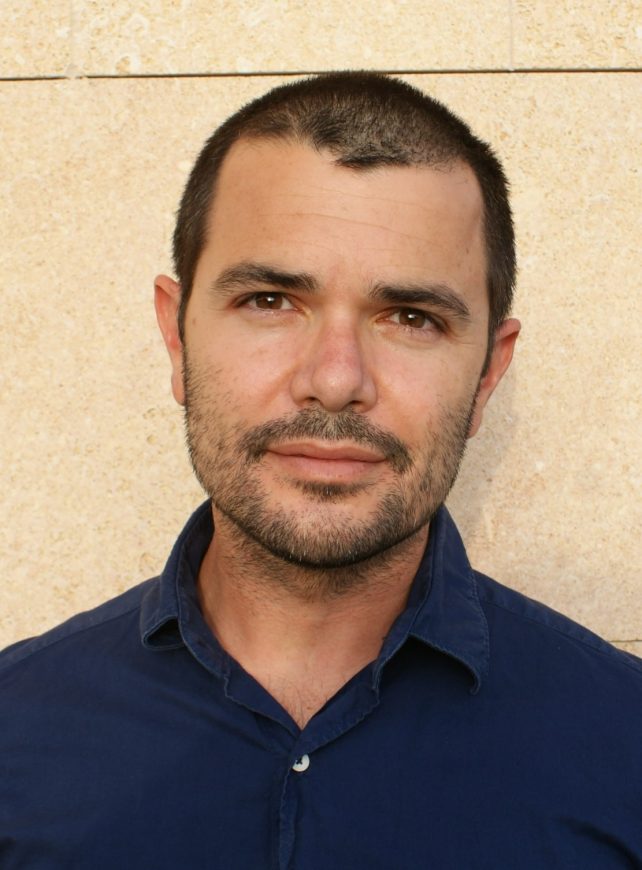Applying Doughnut Economy: A Guide for Developing Countries
Data and analysis lead at Doughnut Economics Action Lab (DEAL), Dr Andrew Fanning, sees definite applications for developing countries when it comes to the doughnut economy. This article was first published in In Focus magazine issue 8.
Doughnut economy theorists have used the sweet pastry’s shape to offer a vision of what it means for humanity to thrive in the 21st century. With applied test cases in countries like Belgium and Amsterdam, it’s believed that similar positive results can be attained in more developing geographies.
What’s Up with the Doughnut?
First published in 2012 in an Oxfam report by Kate Raworth, Doughnut economics has gained traction over the years because of its view of bringing humanity together into the Doughnut in a way that reimagines economic success. The Doughnut is the core concept at the heart of Doughnut economics. Doughnut economics proposes an economic mindset that’s fit for the 21st century context and challenges. It’s not a set of policies and institutions but rather a way of thinking that brings about the regenerative and distributive dynamics that this century calls for.
Drawing on insights from diverse schools of economic thought including ecological, feminist, institutional, behavioural and complexity economics, it sets out seven ways to think like a 21st century economist in order to bring the world’s economies into the safe and just space for humanity. The thinking is focused on meeting the needs of all people within the means of the living planet.

The Doughnut of social and planetary boundaries. Diagram from DEAL website.
‘Imagine a doughnut with a whole in the middle and imagine humanities use of resources radiating out. So, the hole in the middle is the place where people are falling short on the essentials of life, without the food, water, healthcare, education, housing that every person needs,’ says Kate. The graphically represented doughnut illustrates a means to achieve a very complex goal. The doughnut consists of two concentric rings. The inner ring or, social foundation, considers basics Kate mentions like food, water and housing to ensure that no one is left falling short on life’s essentials.
‘We want to get everybody out of that hole but we simultaneously can’t overshoot the outer ring where we put so much pressure on this extraordinary living planet, we begin to kick it out of balance,’ Kate adds. The outer ring or ecological ceiling, considers boundaries such as those of our planet including biodiversity and climate. To ensure that humanity doesn’t collectively overshoot the planetary boundaries that protect Earth’s life-supporting systems. Between these two sets of boundaries lies a doughnut-shaped space that’s both ecologically safe and socially just. A space in which humanity can thrive. According to the model, no one should fall into the hole in the centre of the doughnut.
‘In essence, the aim of the of the doughnut is to meet the needs of all people within the means of the planet and I see this as humanity’s 21st century challenge. It’s the direction of progress that we need to make this century,’ says Kate. The Doughnut’s holistic scope and visual simplicity, coupled with its scientific grounding, has turned it into a convening space for big conversations about reimagining and remaking the future. It’s now being discussed, debated and put into practice in education and in communities, in business and in government, in towns, cities and nations worldwide.
The Doughnut in Use
Amsterdam’s adopting the Doughnut model to lead it’s post-pandemic recovery while aiming for a greener future. The radical shift was announced during the region’s first wave of COVID-19 as a means to, not only recover from the current crisis, but avoid future crises. The model signals a rethinking of what economic success looks like for the city considering metrics beyond traditional financial measures.
The city has a vision to be a thriving, regenerative and inclusive city for all citizens, while respecting the planetary boundaries. In order to achieve this, the need for systemic transformation has been identified. To partner on the much-needed work to be done, the City of Amsterdam has joined Thriving Cities Initiative (TCI), Circle Economy, Biomimicry 3.8 and C40, as well as DEAL.
The DEAL Team has collaborated with Biomimicry 3.8, C40 Cities and Circle Economy, through the TCI, to create the City Portrait methodology, and pilot the approach in Philadelphia, Portland as well as Amsterdam. The City Portrait methodology is the best response that they’ve come up with so far, and it can be distilled down to a single core question for a city: How can our city be a home to thriving people, in a thriving place, while respecting the wellbeing of all people and the health of the whole planet?
A City Portrait for Amsterdam has been developed based on the Doughnut of social and planetary boundaries. It’s a holistic snapshot of the city and one that serves as a starting point for big-picture thinking, co-creative innovation and systemic transformation, rather than as a comprehensive assessment of the city. It presents city life and its impacts through four ‘lenses’ – social, ecological, local, and global – which together provide a new perspective on what it means for a city to thrive. The city already has ambitious environmental goals, including a plan to become carbon neutral and to transition to a circular economy. The portrait further adds social goals thereby creating a holistic vision for future progress.
Similarly, the Brussels Donut applies Doughnut Economics to the Brussels-Capital Region. The initiative’s main aim is to have a framework for reflection adapted to the reality of Brussels in order to consider, guide and inform decision making towards a sustainable society. The Brussels Donut team is made up of the non-profit organisation Confluences, ICHEC high school and DEAL. The project is developed with the support of the Regional Public Service Brussels Economy and Employment in collaboration with the office of the Brussels Minister for Economic Transition. In addition, local administrations, grassroots organisations, companies, schools, universities and citizen movements have also gotten involved in various ways to ensure holistic representation and associated action.
Housing inequality, for example, is being addressed by the Community Land Trust Brussels, who are applying Doughnut economics in support of communities owning their own homes and the land those homes are built on. In turn, the homes themselves are being designed with modularity and circularity as common themes to promote sustainability. Another local example is the Masoe project. The project sees the renovation of six buildings with ecological with social rejuvenation in mind. Local residents are trained in building by recycling, reusing and reviving whatever is on hand. The renovation embraces the reuse of building materials, fixtures, etc. that would have ended up in landfills.
Lessons for Developing Countries
While each reality is different, and necessitates new ways of thinking, doing and acting, specific to each context, Dr Andrew Fanning, Data and Analysis Lead at DEAL says there are definite applications for developing countries. Andrew is closely involved in the efforts to translate the global Doughnut down to smaller scales and contexts, from neighbourhoods to nations. He sees definite potential for the developing world.

‘We see there’s benefit for all countries in becoming regenerative and distributive by design, with each country taking its own route towards meeting the needs of its residents within the means of the living planet,’ says Andrew. ‘In terms of applications, we at DEAL are now co-creating a methodology with a range of partners across the global South to adapt the approach applied in Amsterdam and other global North cities, so that it reflects their context, interests, and needs.’
Andrew led the development of a National Doughnuts Data Explorer where people can explore the results of a major study that quantifies the sustainability of national resource use associated with meeting basic needs in more than 150 countries.
The Doughnut Principles of Practice
In order to ensure the integrity of the ideas as they are put into practice, the DEAL team have turned the Seven Ways to Think, and the five key design traits of organisations, into the Doughnut Principles of Practice. DEAL requests that all projects and initiatives using the Doughnut as a foundational concept be designed and implemented in ways that aim to embody the core principles of Doughnut Economics as set out in these principles.
Embrace the 21st century goal. Aim to meet the needs of all people within the means of the living planet. Seek to align your organisation’s purpose, networks, governance, ownership and finance with this goal. Expect the work to be challenging, innovative and transformative.
See the big picture. Recognise the potential roles of the household, the commons, the market and the state – and their many synergies – in transforming economies. Ensure that finance serves the work rather than drives it.
Nurture human nature. Promote diversity, participation, collaboration and reciprocity. Strengthen community networks and work with a spirit of high trust. Care for the wellbeing of the team.
Think in systems. Experiment, learn, adapt, evolve and aim for continuous improvement. Be alert to dynamic effects, feedback loops and tipping points.
Be distributive. Work in the spirit of open design and share the value created with all who co-create it. Be aware of power and seek to redistribute it to improve equity amongst stakeholders.
Be regenerative. Aim to work with and within the cycles of the living world. Be a sharer, repairer, regenerator, steward. Reduce travel, minimise flights, be climate and energy smart.
Aim to thrive rather than to grow. Don’t let growth become a goal in itself. Know when to let the work spread out via others rather than scale up in size.
Saturday, 13th February 2021 marked nine years since the Doughnut was first published in an Oxfam Discussion Paper entitled A Safe and Just Space for Humanity: Can We Live within the Doughnut? Written by then-Oxfam researcher, Kate, the paper’s opening question asked: Can we live inside the Doughnut? The same question remains just as relevant today and possibly more so as the world looks towards recovery from COVID-19. The holistic scope and visual simplicity of the Doughnut, coupled with its scientific grounding, has turned it into a convening space for big conversations about reimagining and remaking the future.
Main photo by Saf_Y from Pixabay.

